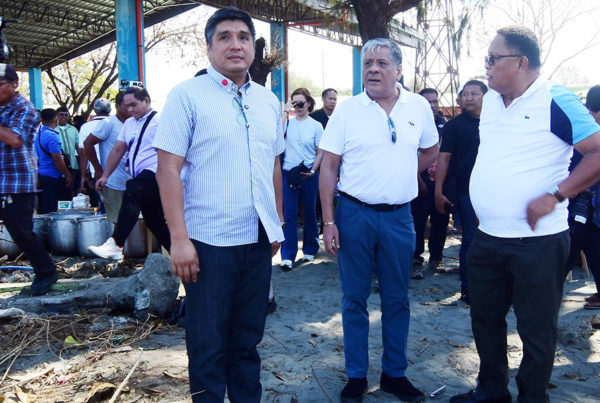Dagupan, vulnerable to flooding, extreme weather events — CORVI
THE city of Dagupan, along the coast of the Lingayen Gulf, is increasingly vulnerable to perennial flooding, water security issues and extreme weather events which negatively impact on its coastal and marine ecosystem and the health of its over 171,000 population.
This was bared in the Climate and Ocean Risk Vulnerability Incident (CORVI) assessment, a product of collaboration of three international organizations whose representatives spent months to conduct such studies in Dagupan: the Stimson Center based in Washington D.C., USA; Ocean Policy Research Institute of the Sasakawa Peace Foundation based in Japan; and the Ecosensya Solution for Environmental Sustainability.
The findings were revealed during a multi-sectoral meeting called by Mayor Belen Fernandez on February 17 at the Star Plaza Hotel in Dagupan City.
Sally Yozell, senior fellow director of the Environmental Security Program at the Stimson Center, said: “Dagupan is at the front line of climate change. It’s fast growing economy and population are increasingly vulnerable to climate impacts such as severe floods and saltwater intrusion caused by more extreme storms, heavy rainfall, and rising sea level.”
CORVI identified five priority risks in Dagupan:
- Exacerbated flooding risks – As the city’s networks makes up 14% only of 40 square kilometers, with seven rivers, 14 creeks and many agricultural fish ponds, Dagupan’s geographic location, in combination with reduction of mangrove and changing climate pattern, place the area at high risk from excessive floodwaters;
- Threats to water security issues – Extreme weather events have resulted in drying of artesian wells while limited waste treatment and sanitation infrastructure have led to water pollution;
- Intensifying extreme weather events – As changes in climate patterns lead to extreme weather events, I.E., typhoons, monsoons, and extreme heat events, major industries including tourism, fishing, and aquaculture are increasingly at risk.
- Vulnerable coastal and marine ecosystem – The lack of sea grass beds, coastal sand dunes and coral reefs, leaves the city’s coast vulnerable to erosion. Marine habitats and shoreline area also supported by mangroves, which have declined in coverage due to illegal cutting; and
- Limited waste treatment infrastructure for both industrial waste and residential sanitation – With no city-wide sewerage treatment facility and inadequate solid waste management, debris and waste water pollution from informal river dumping of household waste and from fishing industry pose risks to human health and the economy, via clogged canals, increased flooding, land subsidence and contamination of bangus (milk fish).
Three priority recommendations were submitted:
- Institutionalized climate resiliency project planning to reduce flood risks, sustain economic growth and improve human health and safety via close collaboration between the executive and legislative branches in passing policies and multi-year budgets that prioritize sustainable infrastructure and renewable energy projects;
- Implement nature-based solution for wastewater treatment or construction of a centralized water treatment plant and groundwater recharging in vulnerable communities to improve water quality by investing in natural-based waste management system, to supplement the treatment until the plant is operational; and
- Improve the sustainability of the city’s blue economy industries (aquaculture, fisheries and tourism) by increasing outreach education to the population on the practices related to sustainable coastal management such as sustainable fishing, replanting mangroves and the hazards of overfishing. (Leonardo Micua)







